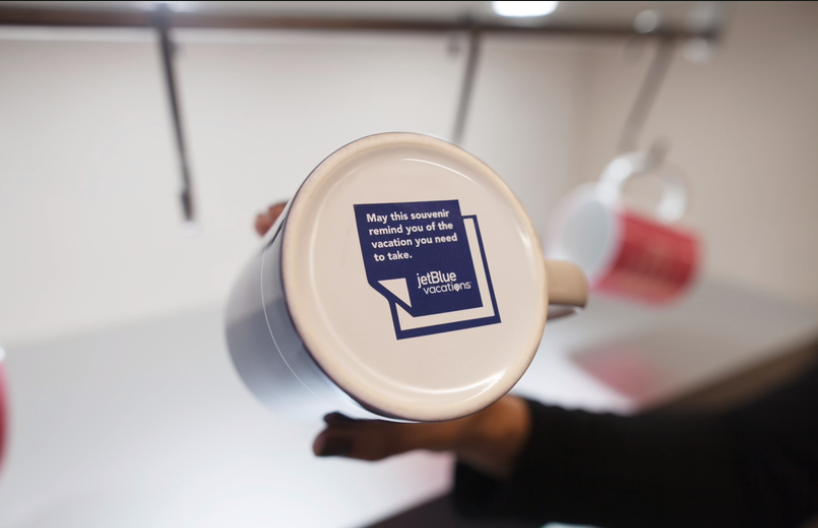Welcome to your marketing therapy session. Please feel free to lie down and relax.
I understand you’re struggling to identify and evoke emotions in your customers. In an era obsessed with innovation, the latest product attributes and exponential scaling, how your customer feels may seem like the antithesis of your organizational priority.
Yes, it’s a lot to balance. According to Forrester research, emotion is now the number one driver of customer experience. Consumers today “have a more personal and reciprocal relationship with their favorite brands.”
Some brands seem to have emotional resonance written in their DNA (cough… Apple… cough…). But “comparison is the thief of joy,” and your company is more than capable of conjuring consumer emotions. Today we’ll explore eight essential emotions and how companies of all kinds are employing feelings in their favor.
1. Humor
Humor isn’t for everyone. Financial institutions, luxury lines and organic grocers, for example, probably shouldn’t look to leave customers in stitches. But it works for some. From its inception, JetBlue has positioned itself as a casual, celebratory, and often cheeky airline. Unlike fellow carriers embroiled in crises, JetBlue avoids scrutiny by not taking itself too seriously. Their latest move involves creating office-themed souvenirs as a means of reminding nine-to-fivers to take a vacation. A Human Resources scented candle is a guaranteed laugh, and also a sure-sign it’s time to take a trip.
2. Optimism
People prefer to think positive. Indeed, when it comes marketing messages, positive framing performs 3x better than negative. The athletic and lifestyle brand Athleta took this into account when collaborating with the nonprofit GirlVentures. The partners recently led a group adolescent girls on multi-day adventure in Joshua Tree National Park. The Athleta-clad teens’ built community, self-reliance, and self-esteem as they journeyed through GirlVenture’s outdoor programming. Athleta captured it all in a high-quality video that could make even Negative Nancy feel good about the future.
3. Ownership
Want to drive foot traffic? Let people feel like they own the place. There’s nothing quite like putting your personal stamp on product—a psychology creatively leveraged by the Field Museum in Chicago. This summer, the museum invited locals to voice the stories of the animals, plants and mineral specimens in their collection. A recording booth traveled the city to capture readings. Only the best performances will make the cut, but you better believe participants will rush to the museum to check if their “Specimen Monologue” is featured.
4. Pride
A brand’s ability to guide behavior by engaging the ego knows no bounds. When helping Danish-brand GAN enter the U.S. risk and compliance market, our audience research revealed that their prospective customers couldn’t stomach another sales presentation. We made a game of it instead—one that enabled attendees to demonstrate their own expertise while leading them on a path of self-discovery about GAN’s products. The ego-boosting event generated qualified leads that led to productive sales calls. Proof that pride matters even in (or perhaps especially in) B2B exchanges.
5. Nostalgia
“We used to walk 5 miles to school. Uphill. In the snow!” Even the pains of the past draw nostalgia for halcyon days. An opportunity to relive our childhood, or any simpler time for that matter, is eagerly embraced by consumers of all ages. Proof positive: Crayola has remained relevant for 114 years. The arts and crafts brand launched its largest-ever campaign this summer to introduce a new, audience-named blue crayon to its 24-color box. The brand has also collaborated with beauty brands to launch lip and nail colors designed to lure adult customers. As if they don’t want to color…
6. Generosity
Fifty-five percent of customers emotionally connect with brands they feel make a positive difference in the world. H&M recently capitalized on the allure of doing good when issuing Foundation 500. The Foundation 500, a counter to the Fortune 500, honors business women of color from rural or developing areas. In addition to running successful companies, the women improve their communities through education, employment and the advancement of equal opportunity. The H&M Foundation complemented the list with an investment of $5.6 million to provide job skills training and business capital to more female entrepreneurs. Now you have an excuse to buy that cute jacket you were eyeing.
7. Trust
Remember when Greek yogurt wasn’t a thing? In 2007, Greek varieties represented only one percent total yogurt sales. Newcomer Chobani recognized that market-entry would be slow if they relied solely on early adopters. Instead, they took a “try before you buy” approach, employing experiential marketing to give consumers a literal taste of their product. The brand built trust. Greek yogurt now commands more than 50 percent of market sales, and consumers choose Chobani’s product over legacy brands like Yoplait and Dannon.
8. Anticipation
Have you ever held your breath in hopes of seeing history made? You must be have tuned in to Nike’s attempt to break the two-hour marathon. Advanced promotion of Breaking2 via the Nike+ Running app built anticipation among tens of millions of already-interested and relevant users. For (spoiler alert: more than) two hours, captive consumers watched the elite runners push the limits of human athleticism. Eliud Kipchoge fell just 25 seconds short of the two-hour mark, but Nike generated a massive audience by building anticipation for a history-making moment.
We’ve now discussed eight essential emotions marketers use to attract audiences. Which is most relevant for your brand? Prioritize appropriate emotions in your marketing efforts moving forward and see your customer relationships grow. Until next week…